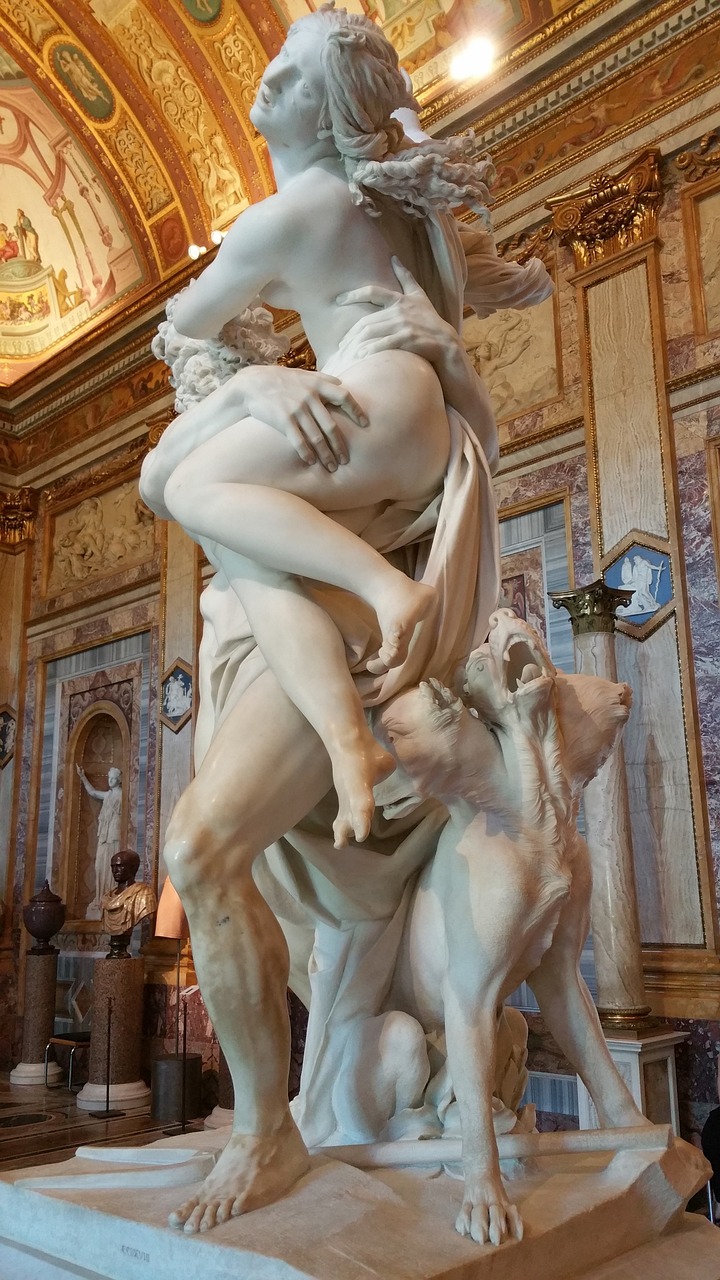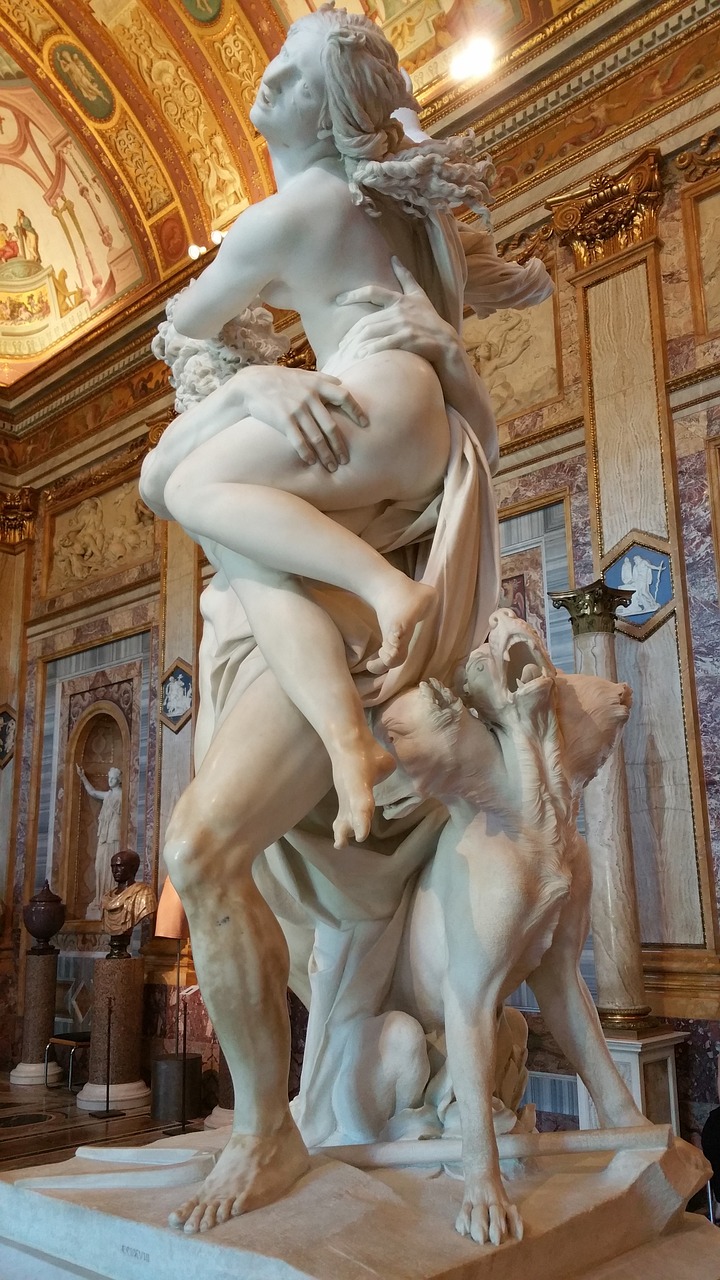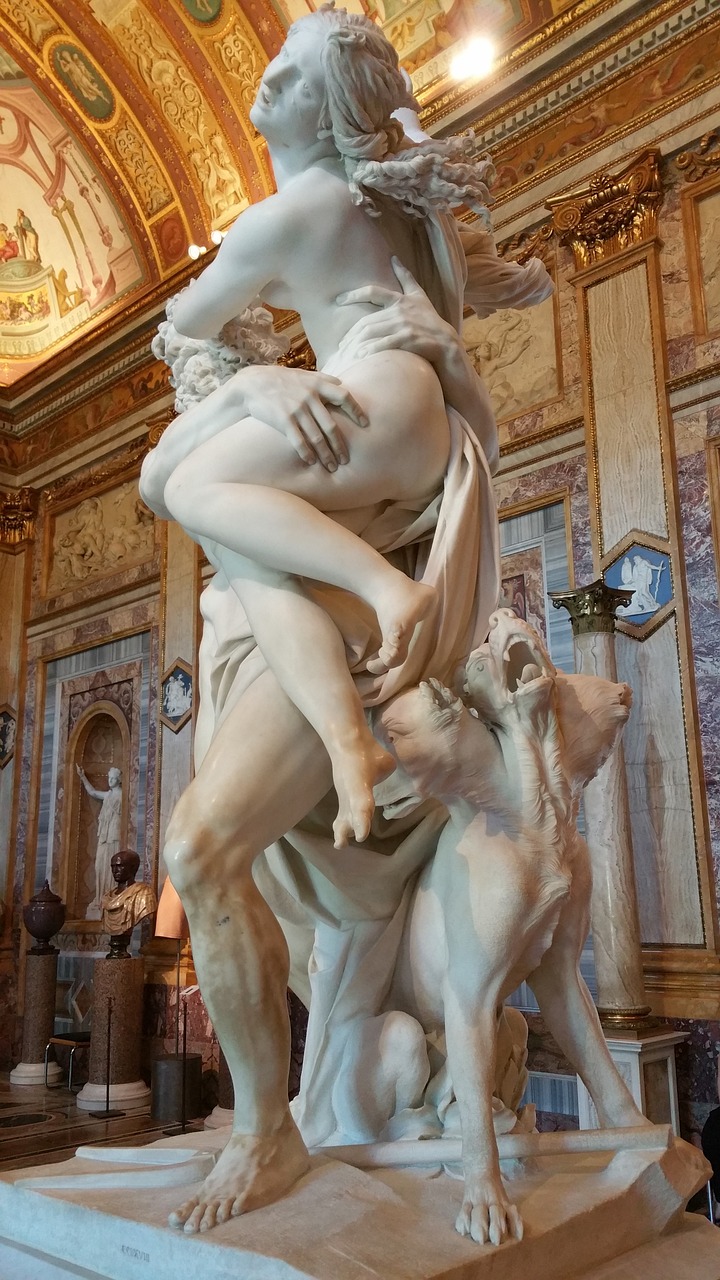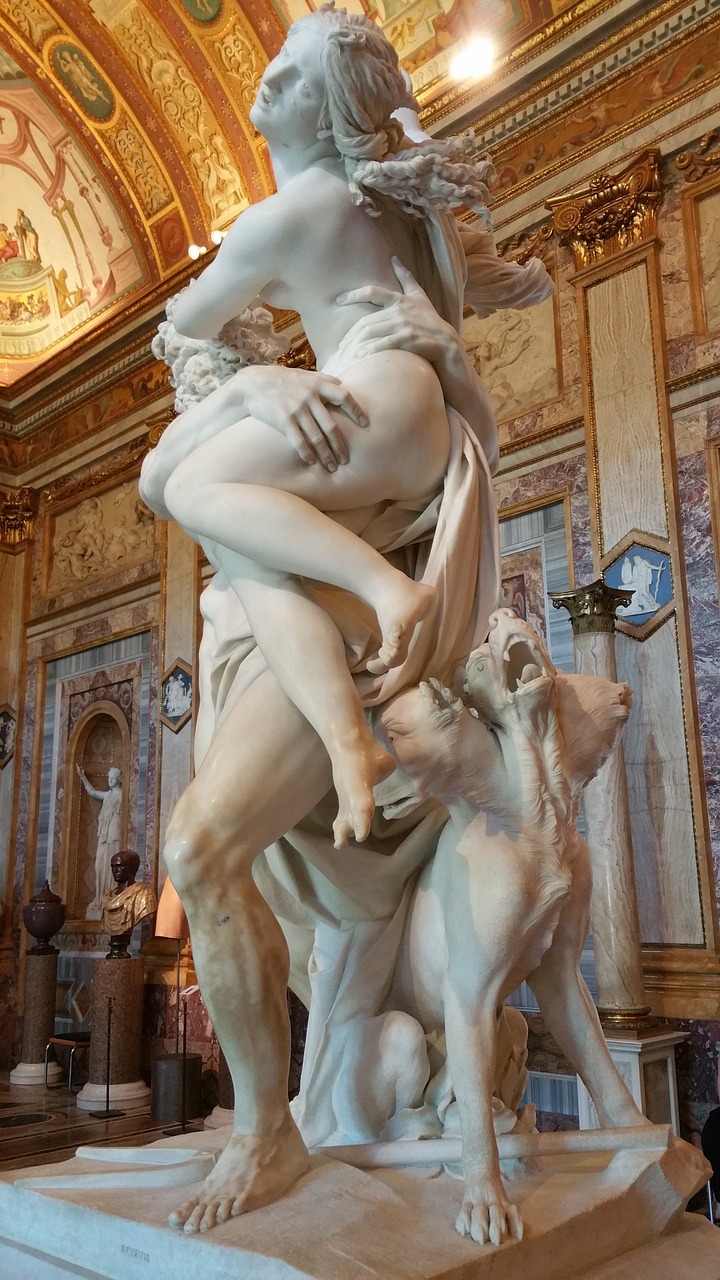Tag: Proserpina
-
The Abduction of Proserpina: A Roman Interpretation Greek and Roman Names – Greek: Περσεφονη (Persephonê) – Roman: Proserpina – Underworld Gods: Ἁιδης (Hades) / Pluto, Dis The tale of the abduction of Proserpina, known as “The Rape of Proserpina,” offers a Roman perspective on the story of Proserpina, the goddess of spring, who was abducted…
-
Ceres, the Roman goddess associated with agriculture and harvest, plays an integral role in mythology, symbolizing both bounty and scarcity. While her blessings bring about abundant crops, her discontent leads to blight and famine. She is often envisioned as a nurturing matron adorned with symbols such as the sickle, grains, and cornucopia. Her Greek equivalent…
-
In Roman mythology, the deity Proserpina, synonymous with the Greek Persephone, wields power over both the changing seasons and the dominion of the underworld. Her significance transcends mere myth, resonating deeply within various cultures and belief systems. The narrative surrounding her abduction by Pluto and her consequent rule in the underworld illustrates her dual identity…
-
The tale of Proserpina and Pluto, as narrated in Ovid’s “Metamorphoses,” depicts a forced union between the god of the Underworld and Ceres’ daughter, Proserpina. This event was initiated by Cupid, who struck Pluto with a golden arrow to incite instant desire, acting on the wishes of Venus, the goddess of love. Venus asserted that…
-
Ceres, recognized in Roman mythology as the goddess of agriculture and harvest, wielded the power to bless humanity with bountiful crops, while her displeasure could lead to blight, drought, and famine. Typically depicted as a matronly figure, her symbols include the sickle, sheaves of grain, and the cornucopia. She aligns with Demeter, her Greek counterpart…
-
Ceres: The Roman Goddess of Agriculture and Fertility Overview Ceres stands as the Roman goddess of grain and fertility, particularly in agriculture. Her influence stretches beyond the realm of crops to encompass motherhood, lawfulness, and the safeguarding of the Roman commoners, known as the plebeians. Much of what is known about Ceres draws heavily from…
-
Overview Pluto, the primary deity of the Roman underworld, held a significant position among the chthonic gods. He represented not only the dead but also governed the wealth hidden beneath the earth in ores, metals, and precious stones. Renowned for his immense power, Pluto also played a crucial role in determining mortal destinies. Often associated…
-
In Roman mythology, Proserpina, known as Persephone in Greek mythology, is a goddess associated with both the changing seasons and the underworld. Her impact extends beyond mere mythology, permeating various cultures and belief systems throughout history. Proserpina’s abduction by Pluto and her reign in the underworld exemplify her dual role as the Queen of the…
-
The Abduction of Proserpina: A Roman Perspective Introduction to Proserpina The story of the abduction of Proserpina, known as Persphone in Greek mythology, unfolds a rich narrative within the framework of Roman mythology. This tale depicts her tragic union with Pluto, the ruler of the underworld. This rendition highlights various Latin interpretations, notably Ovid’s renowned…
-
The “Rape of Proserpina” (Ratto di Proserpina) is an impressive marble sculpture group in the Baroque tradition, crafted by the Italian artist Gian Lorenzo Bernini between 1621 and 1622, when he was merely twenty-three years old. This work illustrates the abduction of Proserpina, the daughter of Ceres, by Pluto, the god of the underworld. Origin…










